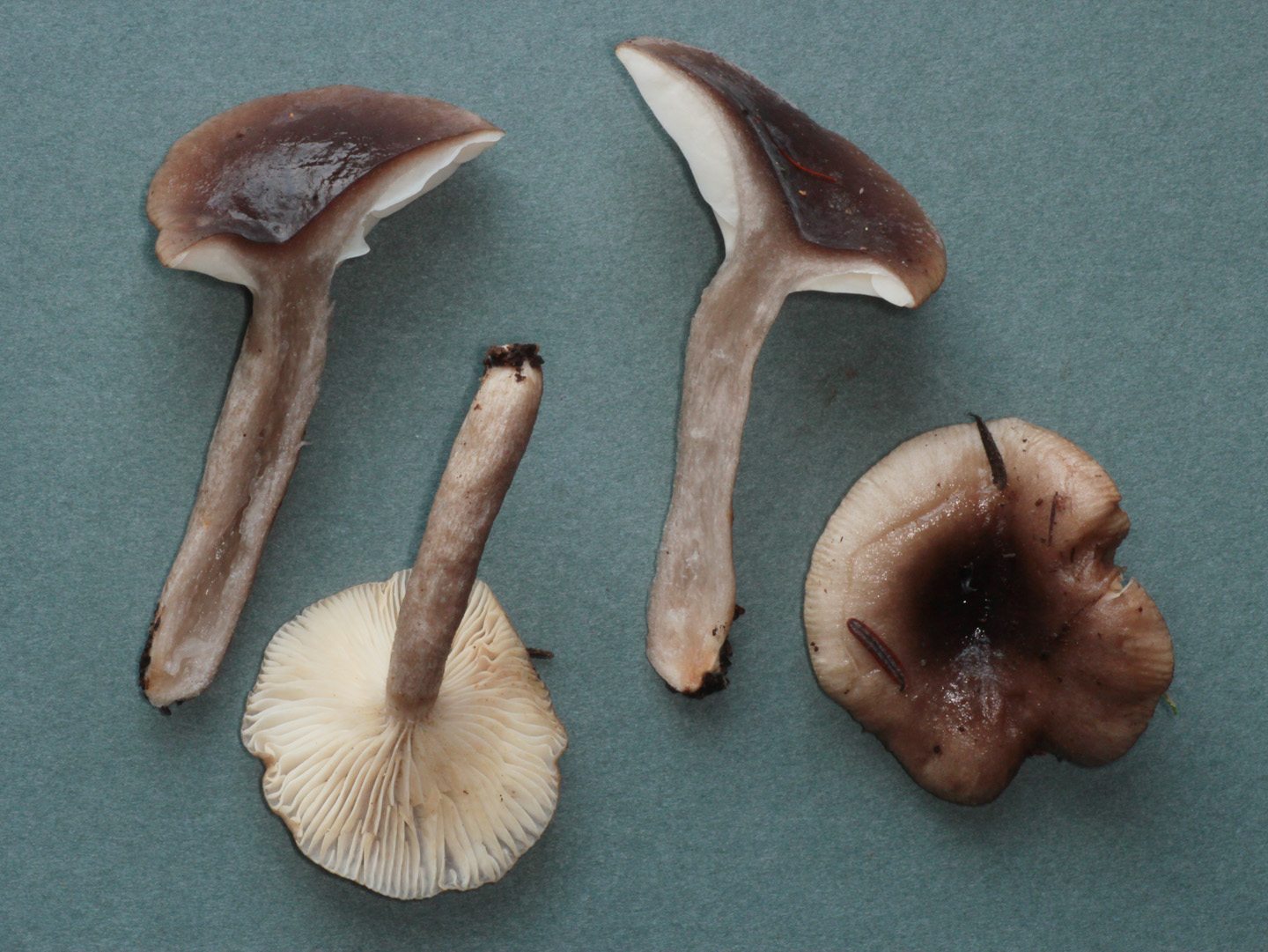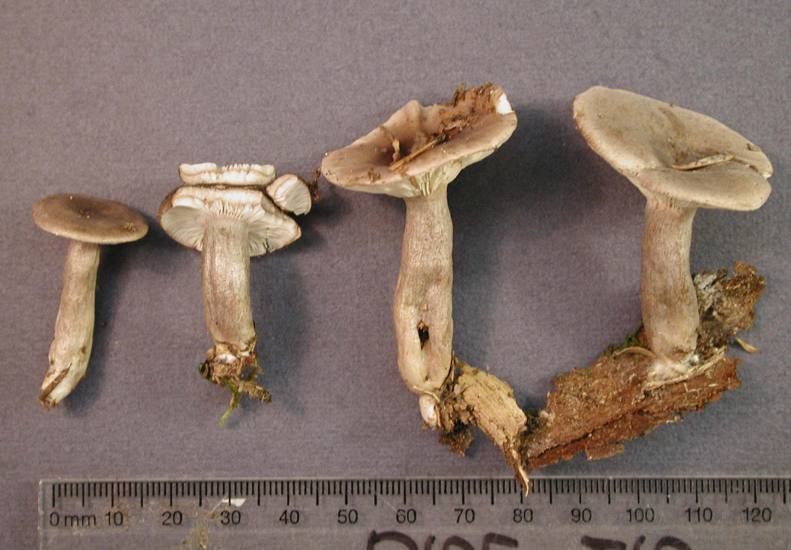Lactarius pseudomucidus — Slimy milk cap
Odour: Indistinct.
Cap: 2–10 cm in diameter, convex at first, spreading out and developing a central depression. The colour is dark brownish grey, darkest in the centre. The surface is smooth, and viscid when wet. The flesh tastes acrid.
Gills: Crowded, attached or slightly decurrent, white and a bit greyish, and staining yellow to brown from the latex. The gills taste very acrid.
Latex: Milk-white and thin, staining the gills yellow to brown.
Stem: 3–10 cm long x 0.5 –1 cm wide, straight and cylindrical, hollow. The colour is pale grey-brown, a bit streaked, often palest at top and bottom. The surface is viscid or tacky.
Ring or veil: None.
Cup: None.
Spores: 7–9 x 6–7 µm, with a network of ridges.
Habitat: In coastal and low-elevation conifer forests, in particular under western hemlock (Tsuga heterophylla) and grand fir (Abies grandis). Ectomycorrhizal.
Geographical range: Western North America: from Alaska to central coastal California, eastwards into Idaho.
Treatment: Contact your regional Poison Control Centre if you or someone you know becomes ill after eating milk caps. Poison centres provide free, expert medical advice 24 hours a day, seven days a week. If possible, save the mushrooms or some of the leftover food containing the mushrooms to help confirm identification.
Poison Control:
British Columbia: 604-682-5050 or 1-800-567-8911.
United States (WA, OR, ID): 1-800-222-1222.



